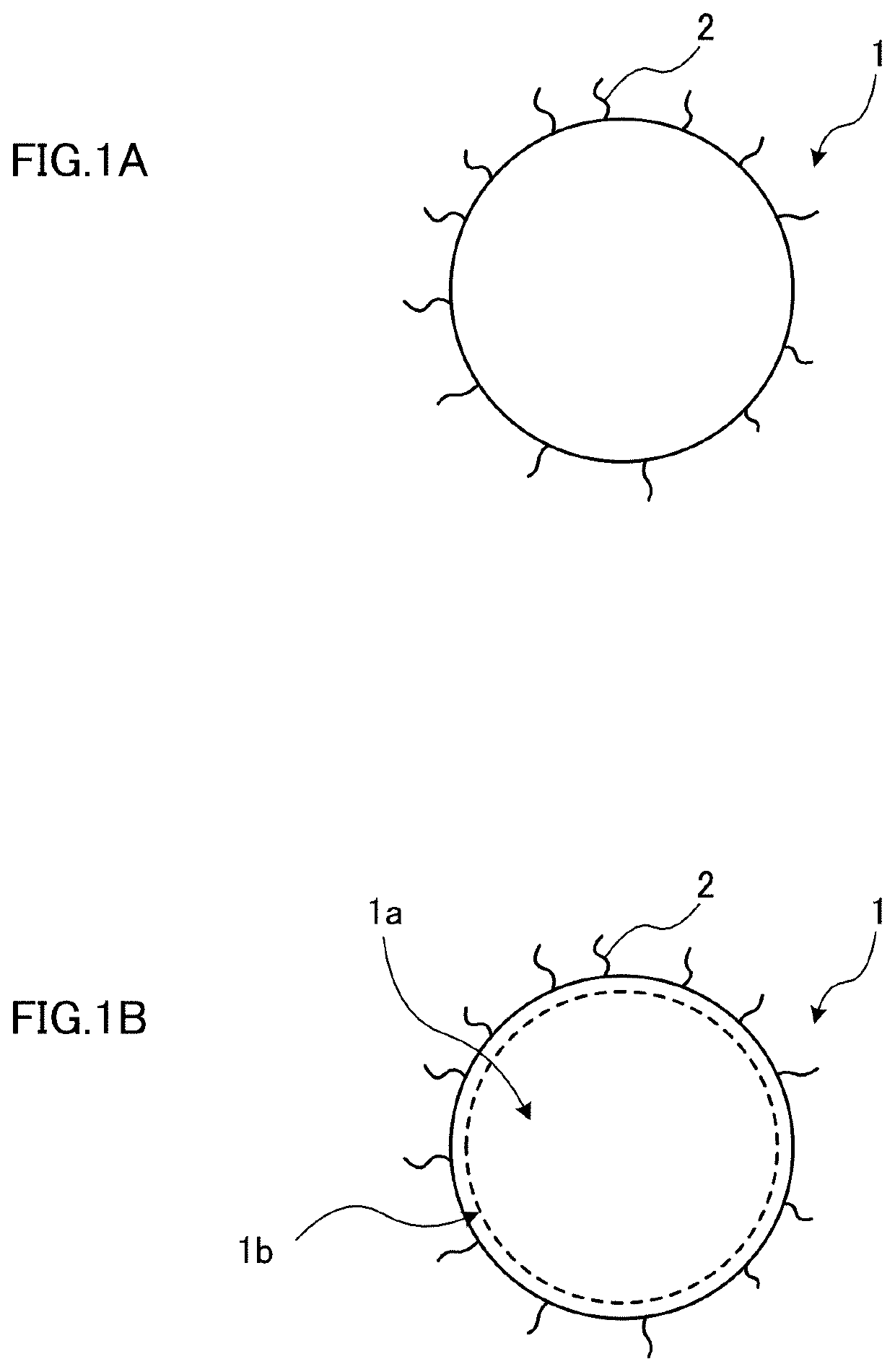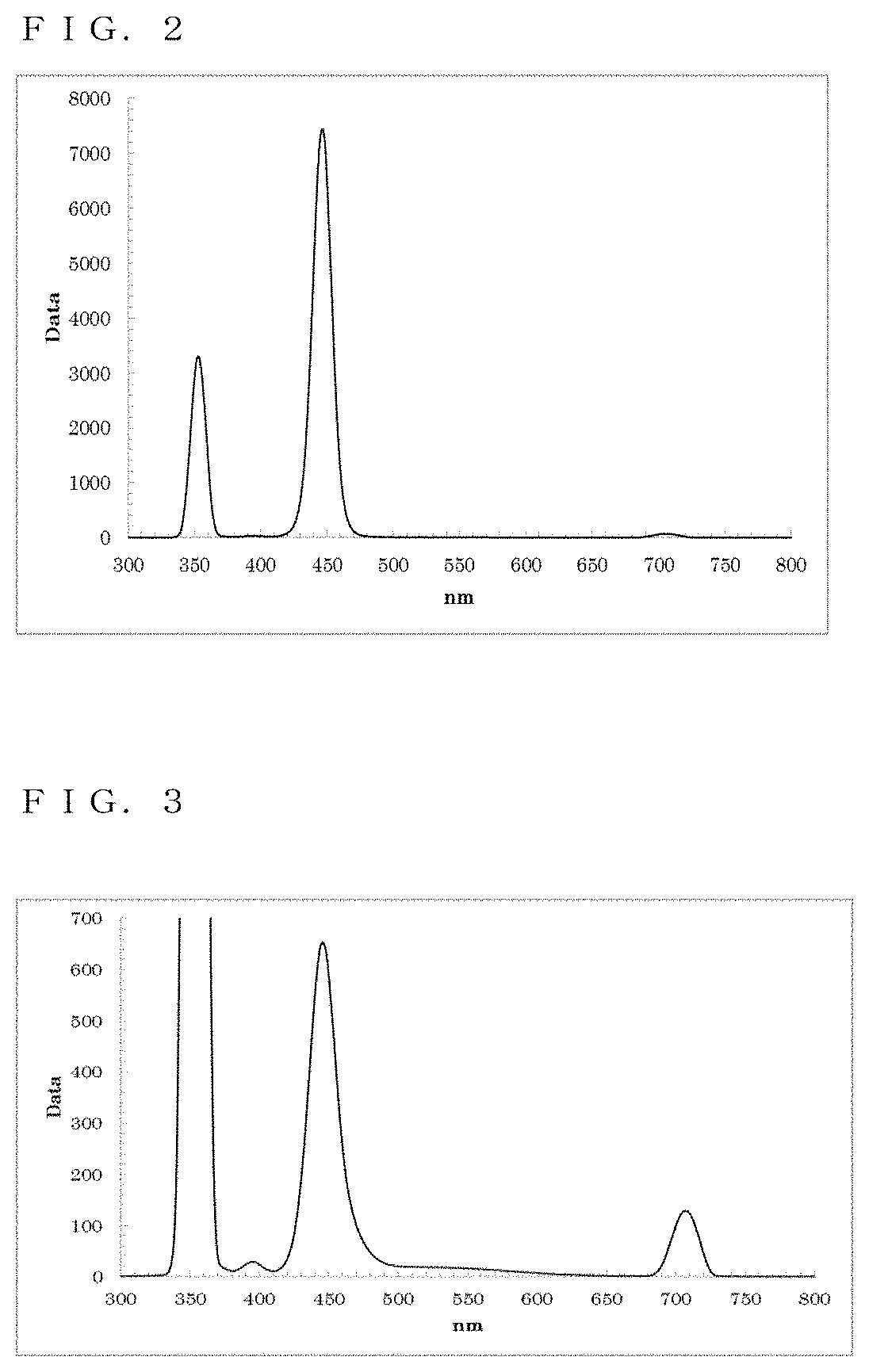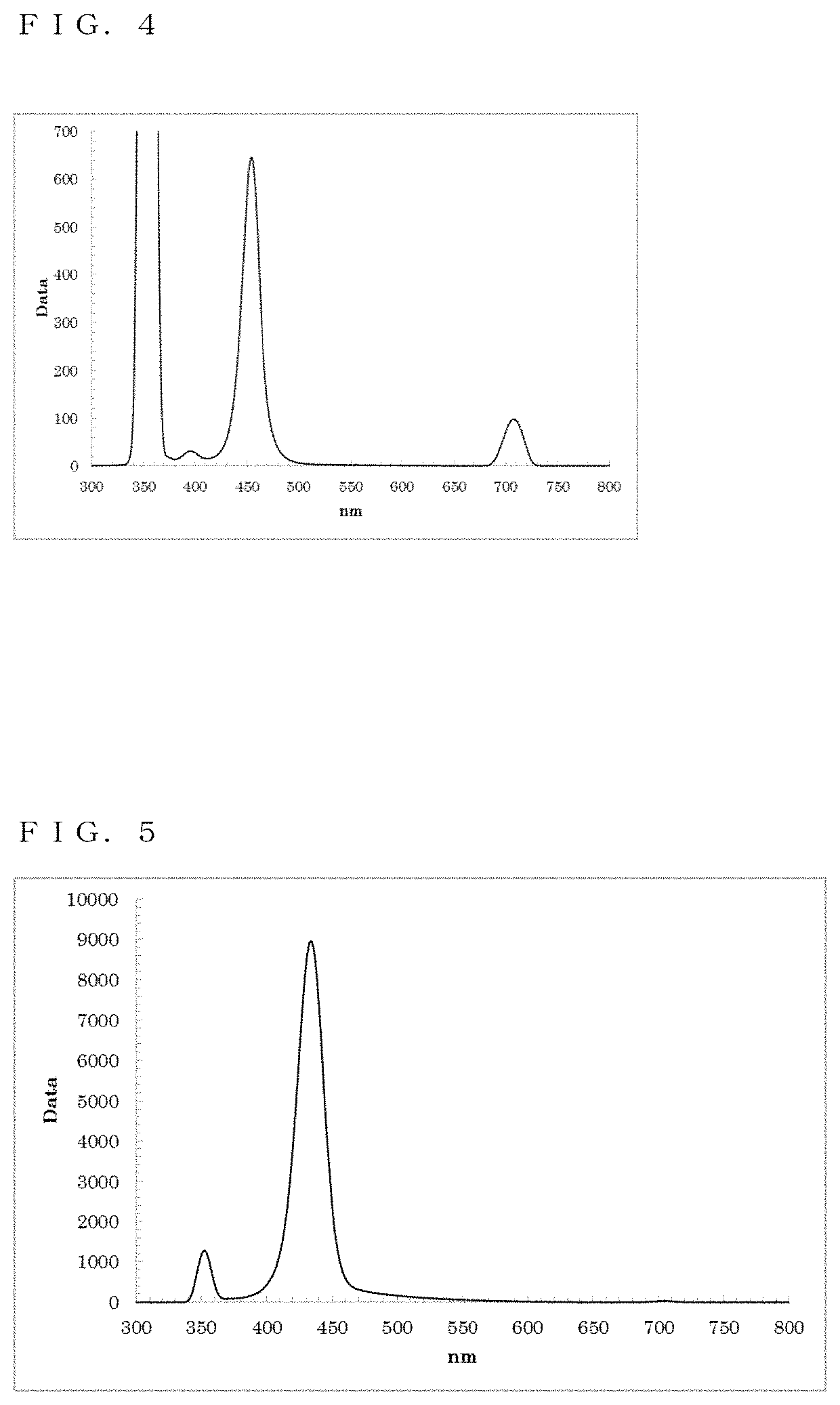Quantum dot and method of producing the same; and wavelength converting member, lighting member, back light unit, and display device using quantum dot
a quantum dot and quantum technology, applied in the field of quantum dots and a method of producing the same, can solve the problems of limited use of cadmium, few reports of practical znse quantum dots having a wavelength, and inability to meet the requirements of blue emission quantum dots, etc., to achieve safe production, reduce fluorescence fwhm, and improve color gamut
- Summary
- Abstract
- Description
- Claims
- Application Information
AI Technical Summary
Benefits of technology
Problems solved by technology
Method used
Image
Examples
example 1
[0115]Into a 100 mL reaction vessel, 131 mg of copper acetylacetonate: Cu(acac)2, 1.5 mL of dodecanethiol: DDT, 4.75 mL of oleylamine: OLAm, and 6.25 mL of octadecene: ODE were charged. Heating was then performed while stirring in an inert gas (N2) atmosphere, thereby dissolving the raw materials.
[0116]To this solution, 1.75 mL of a Se-DDT / OLAm solution (0.3M) was added, and heating was performed while stirring at 220° C. for 10 minutes. The resultant reaction solution (C2Se(S)) was cooled to room temperature.
[0117]Ethanol was added to the Cu2Se reaction solution to cause precipitation, and centrifugal separation was performed to recover the precipitate. ODE was added to disperse the precipitate.
[0118]To the Cu2Se(S)—ODE solution, 682 mg of zinc chloride: ZnCl2, 10 mL of trioctylphosphine: TOP, and 0.4 mL of oleylamine: OLAm were added, and heating was performed while stirring in an inert gas (N2) atmosphere at 220° C. for 30 minutes. The resultant reaction solution (ZnSe) was coole...
example 2
[0124]Into a 100 ml, reaction vessel. 36.3 mg of anhydrous copper acetate: Cu(OAc)2, 0.3 mL of dodecanethiol: DDT, 0.4 mL of a Se-DDT / OLAm solution (0.5M), and 10 mL of octadecene: ODE were charged. Heating was then performed while stirring in an inert gas (N2) atmosphere at 220° C. for 10 minutes. The resultant reaction solution (Cu2Se(S)) was cooled to room temperature.
[0125]After that, 273 mg of zinc chloride: ZnCl2, 3 mL of trioctylphosphine: TOP, and 0.1 mL of oleylamine: OLAm were added to the solution, and heating was performed while stirring in an inert gas (N2) atmosphere at 230° C. for 30 minutes. The resultant reaction solution (ZnSe(S)) was cooled to room temperature.
[0126]The resultant reaction solution was subjected to a measurement using the spectrofluorometer. Thus, as shown in FIG. 3, a fluorescence wavelength of approximately 445.5 nm and a fluorescence FWHM of approximately 23.0 nm were obtained as optical properties.
example 3
[0127]Into a 100 mL reaction vessel, 131 mg of copper acetylacetonate: Cu(acac)2, 1.5 mL of dodecanethiol: DDT, 4.75 mL of oleylamine: OLAm, and 6.25 mL of octadecene: ODE were charged. Heating was then performed while stirring in an inert gas (N2) atmosphere, thereby dissolving the raw materials.
[0128]To this solution, 1 mL of a Se-DDT / OLAm solution (0.5M) was added, and heating was performed while stirring at 200° C. for 10 minutes.
[0129]To this solution, 1 mL of a S-DDT / OLAm solution (0.2M) was added, and heating was performed while stirring at 200° C. for 10 minutes. The resultant reaction solution (Cu2SeS) was cooled to room temperature.
[0130]Ethanol was added to the Cu2SeS reaction solution to cause precipitation, and centrifugal separation was performed to recover the precipitate. TOP was added to disperse the precipitate.
[0131]After that, 682 mg of zinc chloride: ZnCl2 and 0.4 mL of oleylamine: OLAm were added to the Cu2SeS—ODE solution, and heating was performed while stirr...
PUM
| Property | Measurement | Unit |
|---|---|---|
| fluorescence FWHM | aaaaa | aaaaa |
| fluorescence wavelength | aaaaa | aaaaa |
| fluorescence wavelength | aaaaa | aaaaa |
Abstract
Description
Claims
Application Information
 Login to View More
Login to View More - Generate Ideas
- Intellectual Property
- Life Sciences
- Materials
- Tech Scout
- Unparalleled Data Quality
- Higher Quality Content
- 60% Fewer Hallucinations
Browse by: Latest US Patents, China's latest patents, Technical Efficacy Thesaurus, Application Domain, Technology Topic, Popular Technical Reports.
© 2025 PatSnap. All rights reserved.Legal|Privacy policy|Modern Slavery Act Transparency Statement|Sitemap|About US| Contact US: help@patsnap.com



